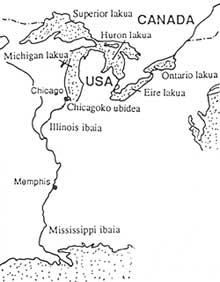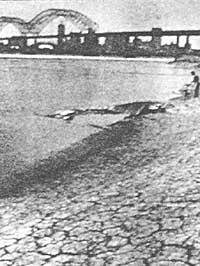Endangered lakes

The shortage of rain was not a danger, but the water in the lakes was used to supply the Mississippi River. The water changes that some U.S. organizations wanted to make have been suspended as a result of protests and disproportionate ecological problems that could arise from the Canadian government.
South of Chicago, a canal connects the Illinois River, Mississippi branch, to Lake Michigan. The idea was that with this channel, 280 m 3 per second would leave Lake Michigan. If the project went ahead, the size of the Illinois River would have doubled and the Mississippi level would rise 10 cm in the Tennessee Memphis. So the water level of Memphis was 8 meters below normal. Since 1872 it was the lowest water level.
The Mississippi River and its tributaries play an important role in the US economy thanks to river transport. In mid-July only half of the Mississippi and Illinois rivers could be engaged in naval traffic and in many branches traffic was impossible.

Its influence on the Great Lakes is not very clear, but it is believed that the water level of Ferret and Michigan could drop two cm in three months. However, the effect of decreasing water level would occur especially in the vicinity of lakes. Wetland ecosystems near the lake could have a strong impact. Not only ecologically. Water supplies for 26 million people living near the lake and getting their water from the lake would also have been threatened. However, the biggest problem is that knowing in advance the real risks and consequences of a work of these characteristics is very difficult.
This time the eviction of the Great Lakes has been avoided, but Canadians know that in the future there will be more controversy of this kind, as greenhouse modelling indicates that the center of the US will become drier.





